자바 기간은 시간을 연, 월, 일 단위로 측정하는 데 사용되는 클래스입니다. Java의 Period 클래스 패키지는 java.time.Period입니다. Period 클래스 객체는 기간을 지정하거나 연, 월, 일 단위의 두 시간 간의 차이를 확인하는 데 사용됩니다. Period 객체는 불변이고 스레드로부터 안전합니다. Period 객체는 불변이므로 일단 생성되면 값을 변경할 수 없습니다. 그러나 다른 Period 개체를 기반으로 새 Period 개체를 만들 수 있습니다. Period 클래스는 객체 클래스(객체가 Java의 모든 클래스의 슈퍼클래스이기 때문에)를 상속하고 ChronoPeriod 인터페이스를 구현합니다.
무료 소프트웨어 개발 과정 시작
웹 개발, 프로그래밍 언어, 소프트웨어 테스팅 등
구문:
Java의 Period 클래스 선언 구문은 다음과 같습니다.
public final class Period extends Object implements ChronoPeriod, Serializable
{
// variables and method of the class Period
}아래에는 Period 클래스 메소드 목록이 예제 코드와 함께 설명되어 있습니다. 유사한 메서드에 대해 예제 코드를 추가로 사용할 수 있습니다(각 메서드 예제 코드는 제공되지 않음):
코드:
import java.time.Period;
import java.time.LocalDate;
import java.time.temporal.ChronoUnit;
public class PeriodClassDemo {
public static void main(String[] args) {
Period p = Period.between(LocalDate.ofYearDay(2017, 20), LocalDate.ofYearDay(2017, 30) );
System.out.println(p);
System.out.println(p.get(ChronoUnit.DAYS));
System.out.println(p.get(ChronoUnit.MONTHS));
System.out.println(p.get(ChronoUnit.YEARS));
}
}출력:
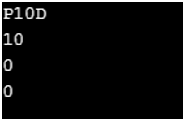
코드:
import java.time.Period;
import java.time.LocalDate;
import java.time.temporal.ChronoUnit;
import java.time.LocalDateTime;
public class PeriodClassDemo {
public static void main(String[] args) {
Period period = Period.of(1,1,1);
LocalDateTime d = LocalDateTime.now();
System.out.println(d);
d = (LocalDateTime)period.addTo(d);
System.out.println(d);
}
}출력:

코드:
import java.time.Period;
import java.time.LocalDate;
import java.time.temporal.ChronoUnit;
import java.time.LocalDateTime;
public class PeriodClassDemo {
public static void main(String[] args) {
Period p1 = Period.of(1,1,1);
Period p2 = Period.of(10,5,2);
Period p3 = Period.of(10,5,2);
System.out.println(p1.equals(p2));
System.out.println(p2.equals(p3));
System.out.println(p2.isNegative());
System.out.println(p2.isZero());
}
}출력:
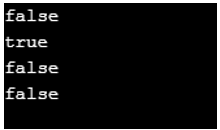
코드:
import java.time.Period;
import java.time.LocalDate;
import java.time.temporal.ChronoUnit;
import java.time.LocalDateTime;
public class PeriodClassDemo {
public static void main(String[] args) {
Period p = Period.from(Period.of(10, 5, 2) );
System.out.println(p);
}
}출력:

코드:
import java.time.Period;
import java.time.LocalDate;
import java.time.temporal.ChronoUnit;
import java.time.LocalDateTime;
public class PeriodClassDemo {
public static void main(String[] args) {
Period p = Period.from(Period.of(10, 5, 2) );
System.out.println(p.getChronology());
System.out.println(p.get(ChronoUnit.MONTHS));
System.out.println(p.getDays());
System.out.println(p.getMonths());
System.out.println(p.getYears());
System.out.println(p.getClass());
System.out.println(p.getUnits());
}
}출력:
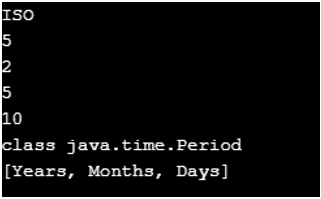
코드:
import java.time.Period;
import java.time.LocalDate;
import java.time.temporal.ChronoUnit;
import java.time.LocalDateTime;
public class PeriodClassDemo {
public static void main(String[] args) {
Period p1 = Period.of(10,5,2);
Period p2 = Period.of(20,5,2);
System.out.println(p1.getDays());
System.out.println(p2.getDays());
System.out.println(p1.minus(p2).getDays());
System.out.println(p1.minusDays(2).getDays());
System.out.println(p1.minusMonths(1).getDays());
System.out.println(p1.minusYears(1).getDays());
System.out.println(p1.multipliedBy(2).getDays());
System.out.println(p1.negated().getDays());
System.out.println(p1.normalized().getDays());
Period p3 = Period.ofDays(1);
System.out.println(p3.getDays( ));
Period p4 = Period.ofMonths(2);
System.out.println(p4.getMonths());
}
}출력:
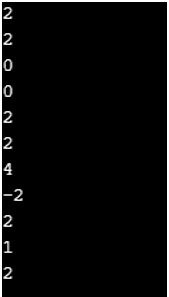
Code:
import java.time.Period;
import java.time.LocalDate;
import java.time.temporal.ChronoUnit;
import java.time.LocalDateTime;
public class PeriodClassDemo {
public static void main(String[] args) {
Period p1 = Period.of(10,5,2);
Period p2 = Period.parse("P1Y2M3D");
System.out.println(p2.getMonths());
Period p3 = p1.plus(Period.ofDays(5));
System.out.println(p3);
}
}Output:

Code:
import java.time.Period;
import java.time.LocalDate;
import java.time.temporal.ChronoUnit;
import java.time.LocalDateTime;
public class PeriodClassDemo {
public static void main(String[] args) {
Period p1 = Period.of(10,5,2);
System.out.println(p1);
LocalDateTime d = LocalDateTime.now();
System.out.println(d);
d = (LocalDateTime)p1.subtractFrom(d);
System.out.println(d);
System.out.println(p1.toString());
System.out.println(p1.toTotalMonths());
System.out.println(p1.withDays(2));
System.out.println(p1.toString());
System.out.println(p1.withMonths(1));
System.out.println(p1.toString());
}
}Output:
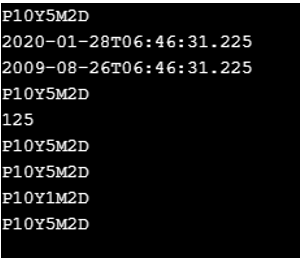
The Period class is one of the built-in class in java, which is used to measure time in years, months, and days and add, subtract, and convert the period, or in simple words, the period class allows one to operate on day or month, or year period. The period class is available in java.time.Period package of java.
위 내용은 자바 시대의 상세 내용입니다. 자세한 내용은 PHP 중국어 웹사이트의 기타 관련 기사를 참조하세요!